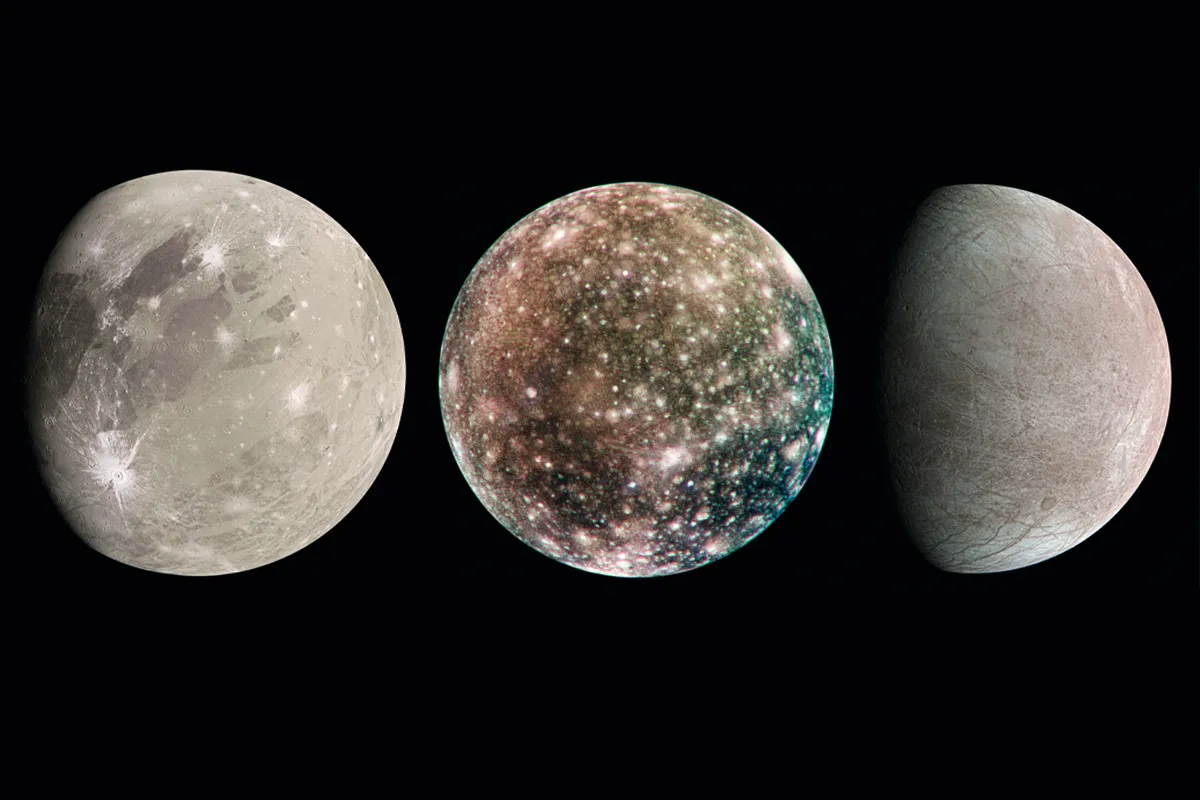Heralded as the European Space Agency (ESA)’s most ambitious mission yet, the Jupiter Icy Moons Explorer (JUICE) mission will attempt launch today, 14 April, after being scrubbed yesterday due to lightning near ESA's satellite-launching system in French Guiana.
There is still some hope for an April launch if today's attempt doesn't go to plan: ESA has an appropriate launching window once a day until 18 April, after which they would have to wait until August.
After successfully launching, the satellite will begin its eight-year journey through deep space to reach Jupiter, where it will search for life on the gas giant’s moons for another eight years.
So where can you watch it? At 12:45pm BST, a livestream will start on ESA Web TV. Lift-off is now expected at 1:14pm BST – weather permitting.
You can also watch on YouTube, where the ESA Web TV is constantly streaming or on the livestream below.
The livestream will see ESA presenters observing the launch right up until confirmation that the spacecraft has deployed its solar arrays, which will expand out from the satellite’s body like wings, at around 2:55pm.
Any questions? If there is anything you would like to learn more about, you can ask using #AskESA on social media.
What is JUICE?
The JUICE mission is ESA-led with engineering support from NASA and JAXA that has been in the making for over a decade. It aims to make detailed observations of Jupiter and three of its moons – Ganymede, Callisto and Europa – over an eight-year period.
It is the first ‘Large-class’ mission in ESA’s Cosmic Vision Programme.
Using remote sensing, geophysical and in situ instruments, JUICE will learn more about the potential for these sites for past or present life.
What kind of life is it hoping to find?
The deep reservoirs on Jupiter’s moons have been identified as one of the most likely places that life might exist beyond Earth.
But ‘life’ here doesn’t mean green, sticky-fingered and googly-eyed monsters – or even bizarre reservoir-dwelling fish. The mission is instead searching for the possibilities of microbial life: tiny microorganisms that includes bacteria, viruses, fungi and algae.
Given its distance from the Sun, whatever life there might be on Jupiter or its moons is unlikely to photosynthesise.
Where will JUICE launch from?
The satellite will launch from Kourou, French Guiana, where there is an ESA satellite-launching system. The low latitude of this location helps to create the 'slingshot effect' needed to launch the satellite on its way.
The 6,200 kilogram satellite will be launched form the Ariane 5 rocket – the same that launched NASA’s James Webb Telescope. After launching, it is expected to separate from Ariane 5 at 1:42pm BST.
The earliest time ESA expects to receive a signal from JUICE is 1:51pm BST.
While the timings might vary with the weather, JUICE has a tight launch schedule. So that the satellite can launch into the correct trajectory, the celestial bodies of Venus, the Earth and our Moon must be aligned. This only happens twice a year, in April and August – giving ESA no more than a one second launch window.
What happens next?
For the mission’s first two and a half weeks, the satellite will deploy its antennas and instruments. ESA will report on these via its Twitter feed.
The first gravity-assist flybys won’t take place until August 2024, when the satellite will conduct a ‘lunar-Earth gravity-assist’: a flyby of the Moon followed by one of the Earth one and a half days later.
This is the first of four JUICE gravity-assist flybys in the inner Solar System, which will also include one of Venus. ESA says these flybys will help to ‘slingshot’ the satellite to Jupiter by increasing its speed and changing trajectory.
What will the mission involve?
After the first lunar flyby in August 2024, JUICE will fly past Venus a year later, in August 2025. The third flyby returns to Earth in September 2026, with the fourth and final flyby also whizzing past Earth in January 2029.

The ETA of JUICE to Jupiter’s orbit is July 2031 – though NASA’s Europa Clipper mission to Jupiter, which launches in 2024, will beat them to it. Europa Clipper is set to arrive by 2030 by taking a shorter route.
Once JUICE reaches Jupiter, the satellite will conduct 35 flybys of three of the planet’s moons while orbiting the gas giant.
It will then go into orbit around Ganymede – the largest of Jupiter’s moons, of which there are over 80. This is due to take place in 2034 and marks the first time a spacecraft has been stationed at a moon other than Earth’s.
The mission will end in 2039.
Will there be any toys on board?
Unlike NASA’s Artemis 1 launch of the ‘uncrewed’ Orion capsule which hosted Shaun the Sheep (donated to ESA by Aardman), Snoopy and four LEGO figures, it is not clear whether the JUICE mission has any quirky additions hidden aboard.
However, ESA does have a joint partnership with PLAYMOBIL which supports the work of UNICEF – so if they are going to launch another toy into space it could be one of those.
Read more: